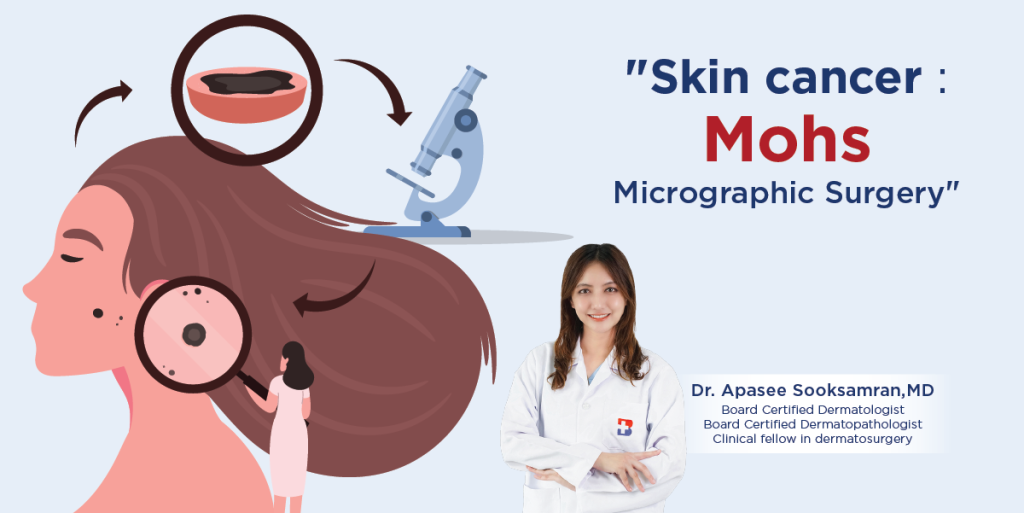
Mohs Surgery : A Comprehensive Guide to Skin Cancer Treatment
Skin cancer is the most common form of malignancy in Caucasian race . The major cause of skin cancer is ultraviolet light exposure, both from the sun and from artificial sources. Basal cell carcinoma is the most common type of skin cancer and accounts for 75 to 80 percent of skin cancers. Squamous cell carcinoma is the next most common and comprises 15 to 20 percent of skin cancer.
Mohs surgery is a precise surgical method combined with microscopic mapping for a targeted removal of skin cancer. It provides the greatest assurance of cancer removal along with the most conservative margins of removal with the highest cure rates for skin cancers, 97 to 99 percent for the first-time skin cancers and 95 to 96 percent for cancers that recur.

Only the margin of the tissue is cut and processed in a horizontal direction so that virtually 100% of the peripheral and deep margin can be examined on the same tissue section under the microscope. This is in contrast to the traditional wide excision which use vertical, or “breadloafed,” tissue processing examines only a small portion of the tumor margin. Additional layers are removed one at a time until the tissue viewed under a microscope shows no remaining cancer. This type of surgery is used to remove as little normal tissue as possible and is often used to remove skin cancer on the face, finger and genitalia with lowest recurrence rate.
Source :
- Prickett KA, Ramsey ML. Mohs Micrographic Surgery. [Updated 2023 Jul 25]. In: StatPearls [Internet]. Treasure Island (FL): StatPearls Publishing; 2023 Jan-. Available from: https://www.ncbi.nlm.nih.gov/books/NBK441833/
- Cohen DK, Goldberg DJ. Mohs Micrographic Surgery: Past, Present, and Future. Dermatol Surg. 2019;45(3):329-339. doi:10.1097/DSS.0000000000001701






